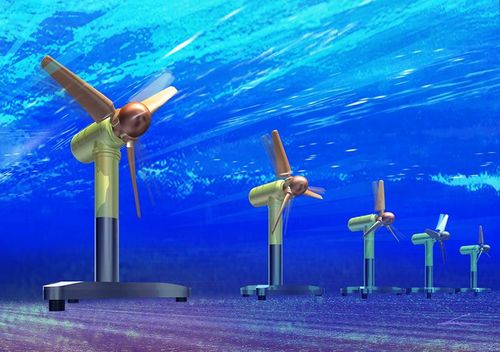**Tidal Energy: What’s the Price Tag on Power from the Ocean?**
(How Much Does Tidal Energy Cost Per Kwh)
Tidal energy sounds like something from a sci-fi movie. Imagine giant underwater turbines spinning with the rhythm of the sea, turning ocean currents into electricity. But how much does this futuristic power actually cost? Let’s break it down.
First, tidal energy isn’t cheap. Right now, generating electricity from tides costs between $0.30 to $0.60 per kilowatt-hour (kWh). Compare that to solar or wind power, which often sit between $0.03 and $0.10 per kWh. The difference is huge. But here’s the thing—tidal energy is still young. Early tech is always pricey. Think about the first smartphones or solar panels. They started as luxury items too.
So, why is tidal energy more expensive? Building stuff underwater isn’t easy. Tidal turbines face brutal conditions—saltwater corrosion, storms, and marine life. Maintenance means sending divers or robots deep into the ocean. That’s not cheap. Plus, tidal projects need strong, steady currents. Only a few coastal areas fit the bill. Setting up infrastructure in these spots drives costs up.
But there’s good news. Costs are dropping. New turbine designs are tougher and last longer. Companies are using materials like carbon fiber to fight rust and wear. Better tech means fewer repairs. Some projects now predict costs could fall to $0.15-$0.20 per kWh by 2030. That’s still higher than solar or wind, but the ocean offers something they don’t: predictability. Tides follow the moon’s cycle, not the weather. You know exactly when they’ll surge. For places with high tides, this reliability could be worth the extra cost.
Let’s look at real examples. The MeyGen project in Scotland, one of the biggest tidal farms, sells power at around $0.30 per kWh. In Canada, the Fundy Ocean Research Center has turbines producing energy at $0.50 per kWh. These numbers include government subsidies. Without help, prices would be higher.
Governments are key here. The U.K., France, and South Korea pour money into tidal projects. They see it as a long-term bet. Fossil fuels won’t last forever. Rivers and winds can dry up or stall. The ocean? It’s not going anywhere.
Storage is another hurdle. Tidal power isn’t constant—it ebbs and flows. Batteries to store that energy add costs. But as battery tech improves, this could change. Cheap storage would let tidal plants save excess power for low-tide hours.
Now, think about hidden costs. Coal and gas plants pay for pollution—health problems, environmental damage. Tidal energy doesn’t burn anything. No smoke, no CO2. If we counted these hidden costs, fossil fuels would look way pricier.
Is tidal energy worth it? For some places, yes. Coastal towns with strong tides could cut reliance on imported fuel. Islands like the Faroe or Orkney already use tidal power to dodge sky-high diesel costs. It’s not a global solution yet. But as tech improves, those underwater turbines might become as common as wind farms.
(How Much Does Tidal Energy Cost Per Kwh)
The bottom line? Tidal energy costs more now. But the ocean’s power is endless. With smarter tech and bigger investments, those dollar signs could shrink fast. Maybe one day, flipping a light switch will mean tapping into the sea—and nobody will blink an eye.
Inquiry us
if you want to want to know more, please feel free to contact us. (nanotrun@yahoo.com)




